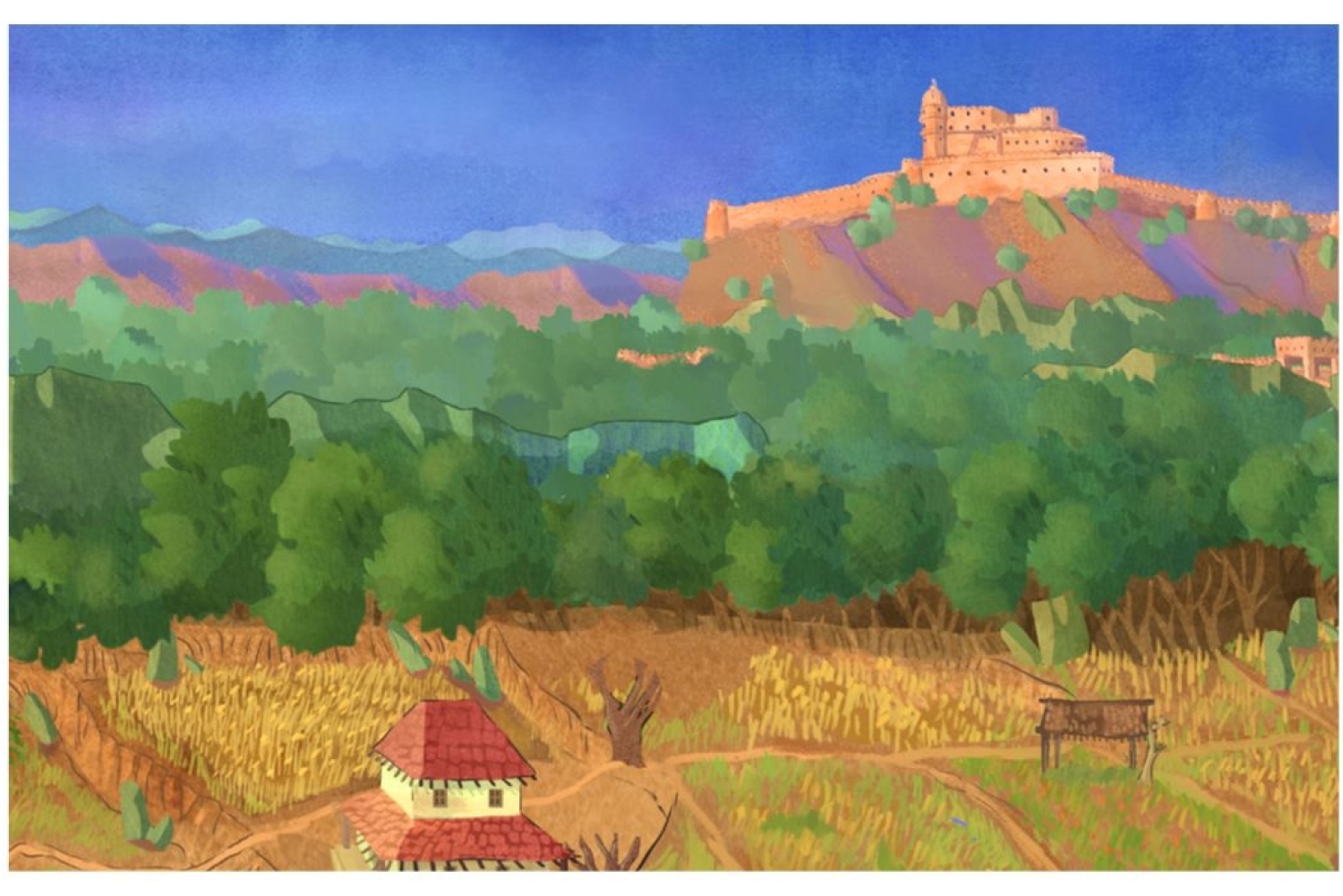

The Palace on the Hill by Niku Games is a heartfelt story of ambition, struggle and friendship set in 90s rural India. It is an interactive, immersive game, but it is also a narrative that represents Indian culture within the gaming landscape. Inspired by Pahari miniature art and a soundscape of flute and tabla, this game aims to build a world that is relatable to the Indian gamer. We’re in conversation with Mala Sen, Director, Artist and Founder at Niku Games, about the cultural detailing of their game, their creative process and design forward gaming in India.
First and foremost, what inspired you to create The Palace on the Hill? Where did it all start — take us right back to the beginning.
After my M.F.A. from Kala Bhavan, Santiniketan, I moved to Bengaluru to start my career as a textile artist. It was at that time that a friend of mine introduced me to the film Indie Game: The Movie. The film follows the struggles of three indie game developers at different stages of development of their games. The film was life-changing for me. For the first time, I realized that there was a lot of art in games and that it was something I could do. The idea that I could create a world with my art in which players could walk around, interact with, and live in really appealed to me. A few months later, I met Mridul at a game developers' party. He was looking to pivot into game development as well. We hit it off and started Niku Games together!
Inspired by narrative games we had played like Fran Bow and Valiant Hearts, we started making some small prototypes through which we began learning the process of how exactly to make a game. During a trip to Rajasthan, we came across Kumbhalgarh Fort. The fort, along with many ancient temple structures, is nestled on top of hills overlooking a serene valley village. This beautiful sight planted the seed that grew into the game.
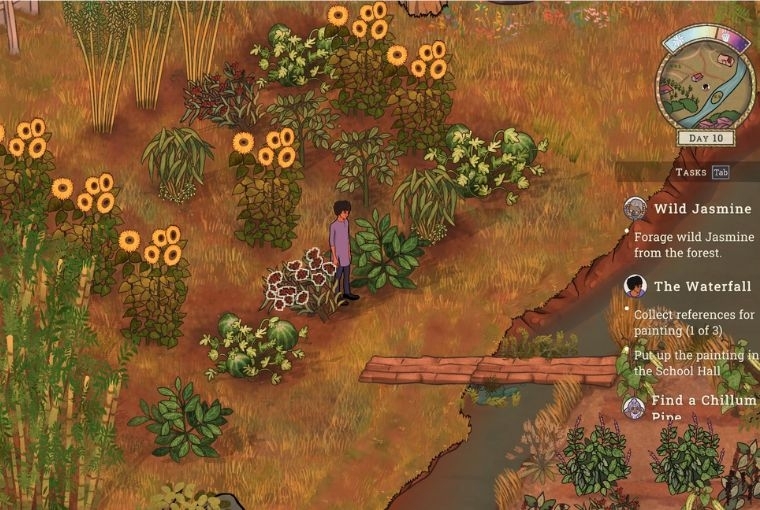
What was your design process for building the game, especially since it has been strongly influenced by Indian traditions and architecture?
When we started Niku Games, it was very clear to us that we wanted to make games that are shaped by our culture. It wasn't about making cultural games, but about making games that represented us. So, it was important to us to take inspiration from home in every aspect of the game. I wanted the ambiance to reflect the warm, lazy summer vacations of childhood, and so the colour palette is earthy with dashes of bright green foliage, pops of red from the tiled roofs of village cottages, and pale pinks from the sandstone and marble of ancient palace ruins. The art of the game was created by painting large swatches of paper with watercolour and using these textured swatches as backgrounds for our drawings. This further emphasized the nostalgic storybook feel.
The narrative follows a series of paintings done by Vir, the main character, about the romantic stories he discovers about the royalty that once ruled the place. Vir's painting style is inspired by Pahari miniature art. The music, created by Srikant Krishna, incorporates instruments like the flute and tabla. Many farming games follow the trope of a person tired of their 9-to-5 job in the city moving to the countryside to set up their farm and lead a peaceful life. In TPotH, the main character is a teenager from a debt-ridden farming family who dreams of going to the city to find a life for himself, a story that is much more relatable to us.
What were some challenges you faced along the way in the creation of this game, especially in terms of balancing storytelling and exploration based game-play?
The way the game was developed was very organic. We had the basic outline of the story, but after that we focused on developing the environment, game systems, and village characters, and slowly added in the details of the narrative. The story's progression is based on key quests. Apart from these, there are side quests, farm management, and exploration. All of these are done at the player's own pace. The player can choose to complete quests in whatever order they discover them. So, because of this loose way of game progression, which relies a lot on player agency, balancing storytelling and exploration was very simple. The painting mechanic in the game works by exploring locations and collecting the painting subject. After that, the player collects references for the painting from the environment and gets pieces of oral history from villagers to complete the painting. Early on in the game, this mechanic was very different. It was a complicated system of choosing dialogue to create different versions of the paintings to tell different stories. While playtesting, we realized that this was not all that fun, and so we scrapped many months of hard work for a simpler, exploration-based painting mechanic.
One main challenge was funding. The project was bootstrapped by the two of us, and in the middle of development we were struggling with finances. We were about to drastically cut down our scope and release the game quickly, but luckily we got chosen for some grants and mentorship programs like the Netflix-sponsored Wings Elevate Program, the Xbox DAP Program, the Google Indie Games Accelerator, and a grant from the government agency ANRF. These opportunities gave us hope to continue and finish the game as originally planned.
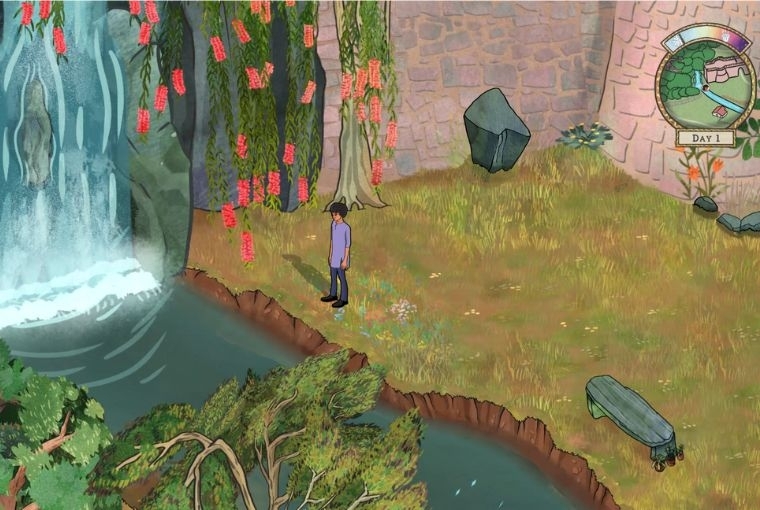
How did you go about researching rural Indian references such as old railway stations and palace ruins to ensure authenticity in your visuals?
Many cultural details arose from our team's combined experiences growing up and traveling across our diverse country. We're all from different regions, which is reflected in our NPCs, flora, architecture, and food. The railway station was inspired by one in a small Punjabi village called Jaijon Doaba. The way to get water in the game is by cranking up a hand pump. In Vir's room, you can find a Milton water bottle, the rectangular school bag (the kind that kids used to carry by balancing the strap on their heads), and white canvas shoes.
Vir's teacher, Ammu, is inspired by the beloved 'aunty'. Wise, warm, gossipy, and wearing colourfully patterned nighties. Wherever we traveled, we made it a point to ask locals to point us toward any old ruins we could trek to, visit nearby markets and dhabas to see how food is prepared in tandoors, take photos and make sketches of people making sweets in huge kadhais, travel by coracle in Hampi, etc. Then, there are all the ideas we notice on a day-to-day basis and later incorporate into our game based on our memory. This created a fictional, almost fantasy-style village setting with influences from all over the country.
The game is more than just a game, it’s a story. What do you think this sort of world-building does for immersive experiences such as games?
A game is, after all, an entertainment medium just like a novel, comic, or film and has immense potential for expression. When a game tells a story, is accompanied by rich world-building, and is made by a diverse team who cares about honesty, the result is an immersive and unforgettable experience.
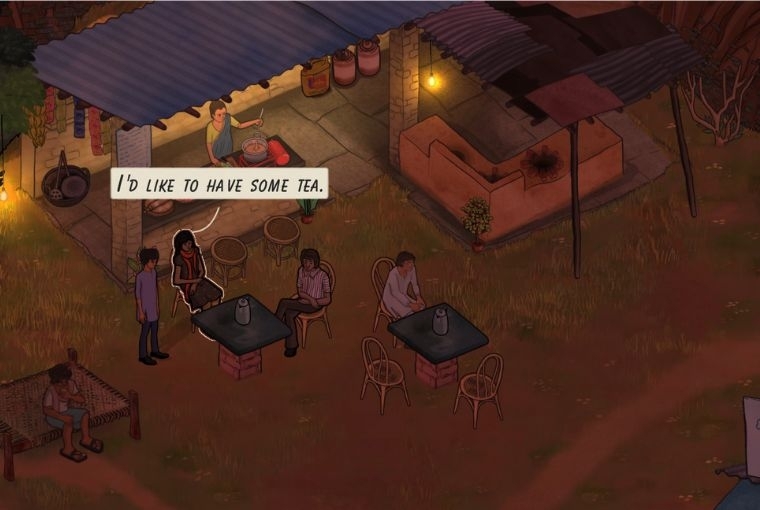
What does Niku Games aim to bring to the landscape of design-forward gaming in India? What do you hope for players to take away from your practice?
Game development in India is still at a very nascent stage. Funding opportunities are hard to find, and we don't really have a rich game development history or the years of experience that other countries have had. But, by creating pipelines that are accessible to our small team with a modest budget, we aim to create quality gaming experiences that can be enjoyed by both the Indian audience and globally. We have received a lot of great feedback from people who feel happy to see a game with characters who look like them and set in places they relate to.
What is the future looking like — what are you working on at the moment?
We are a very small team. For the future, we would love to collaborate with like-minded creatives from other fields—for example, writers, comic book authors, filmmakers, and animators—and create something together. The game is available on Steam and Xbox, but we get many emails and comments on our social media asking us to release the game on mobile, which is the most accessible device for our Indian audience. So, that is our priority right now.
Apart from that, we are working on the bones of our next game, which I can't talk about right now, but let me just say we are very excited about it!
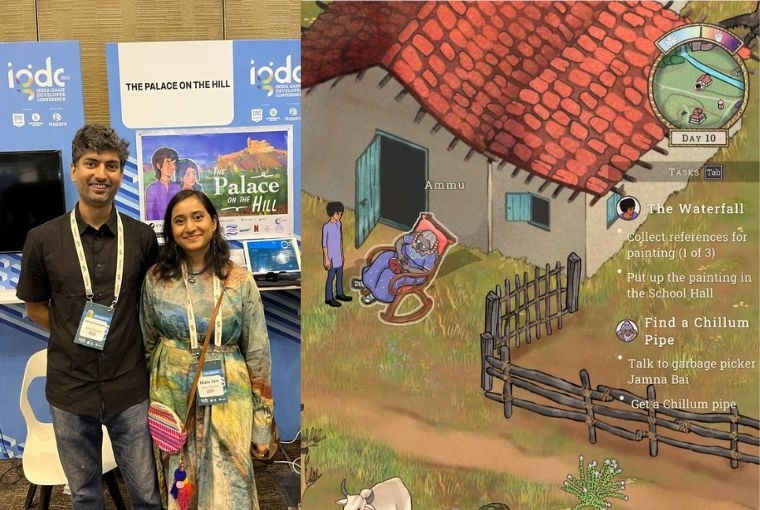
Founders: Mala Sen and Mridul Kashatria
Words Neeraja Srinivasan
Date 20-8-2025